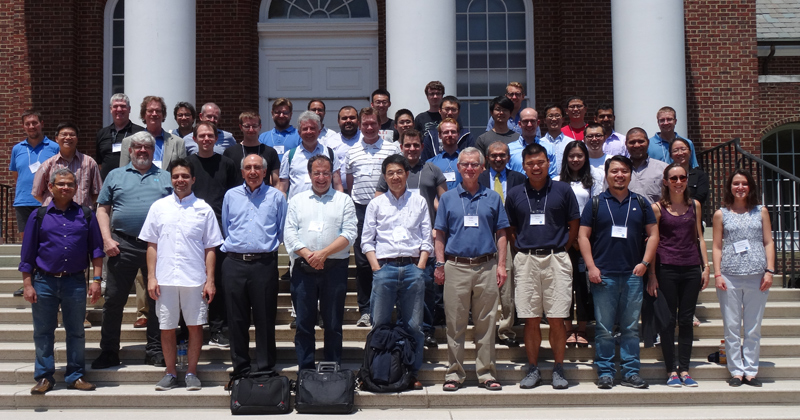The 15th International Conference for Mesoscopic Methods in Engineering and Science (ICMMES 2018) was held at the University of Delaware from Monday, July 9, 2018 to Friday, July 13, 2018.
Local organizers of this year’s conference were Lian-Ping Wang, a professor of mechanical engineering at the University of Delaware, and William Matthaeus, Unidel Professor of Physics and Astronomy at UD.
Around 53 participants registered for this year’s conference, which featured four short-course lectures, seven invited talks, and 36 regular talks covering theory, implementations, and applications of mesoscopic simulation methods. Mesoscopic methods refer to numerical methods based on statistical descriptions of molecular motion, thus combining the details of molecular interaction physics and relatively good computational efficiency.
“In the big scheme of things, scientists and engineers are solving a variety of fluid flow problems ranging from flows in microscale devices to atmospheric flows and ocean circulations using a variety of computational methods, a field we call computational fluid dynamics (CFD),” said Wang. “Over the years, the advancement in computer power allows more and more problem to be solved numerically, even turbulent flows and multiphase flows with very little approximations.”
Many of the methods discussed involved the mesoscopic approach typically based on the Boltzmann equation, which ties together the more conventional macroscopic CFD approach based on the usual engineering continuum mechanics, and the very expensive microscopic approach based on the molecular dynamics description. The most representative mesoscopic methods nowadays are the lattice Boltzmann method (LBM) and gas kinetic schemes (GKS), said Wang, and the use of these mesoscopic methods for CFD is a relatively new field. LBM has become a viable alternative for CFD in many important applications such as turbulent flows, flow through porous media, multiphase flows with complex moving interfaces, he said.
“Conventional CFD based on the continuum mechanics has difficulties dealing with these complex flows, and mesoscopic methods are found to be more effective,” he said.
Major advances on mesoscopic methods reported at this conference include the unified gas kinetics schemes for flows at all Knudsen numbers, cumulant moments based LBM, sharp-interface simulation of dispersed multiphase flow, and phase-field based two-fluid multiphase flow simulation, said Wang.
Some of the basic building blocks of the LBM method were developed at UD in the early 90s by Hudong Chen (now Chief Technical Officer at EXA Corp.), and ShiYi Chen (now President of Southern University of Science and Technology in Shenzhen China), working with Matthaeus in the Department of Physics and Astronomy.
Invited speakers at the conference included: Cyrus K. Aidun from Georgia Tech, Rodney Fox from Iowa State University, Jingwei Hu from Purdue University, Homa Karimabadi from AV Lab, Inc., Martin Maxey from Brown University, Ulf Schiller from Clemson University and Francesco Valentini from the University of Calabria in Italy.


